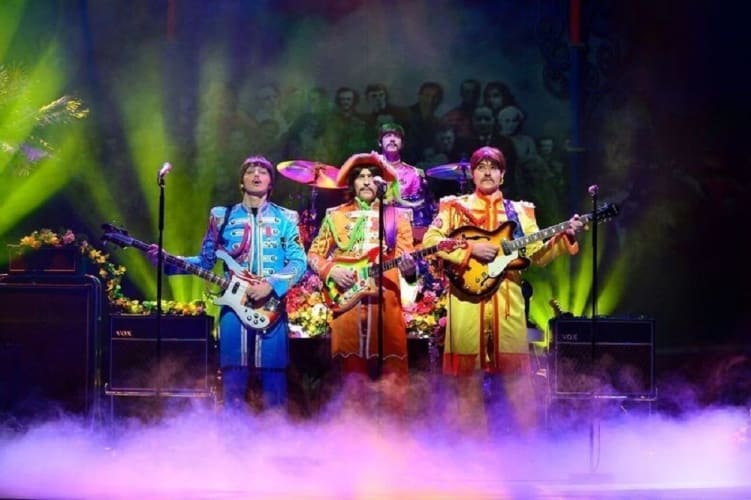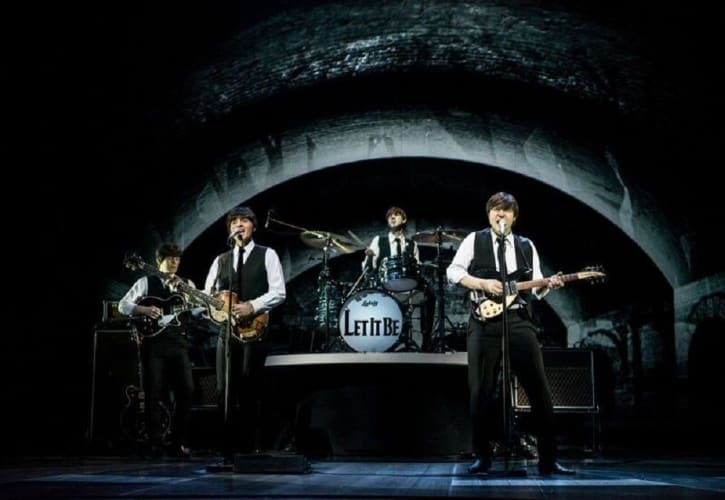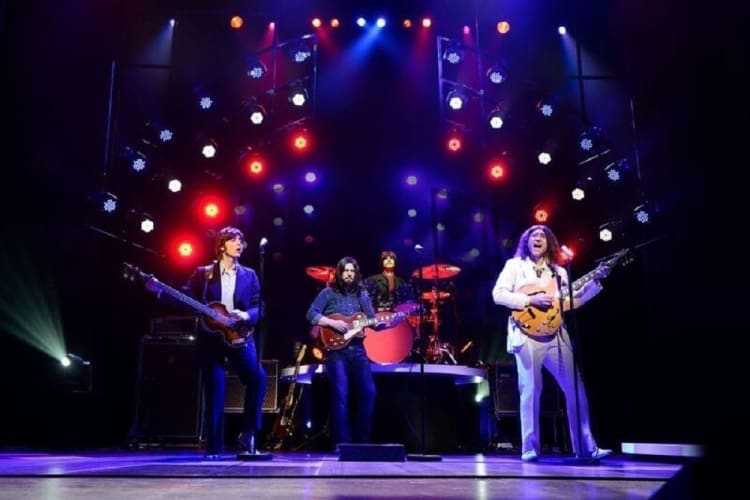Let It Be is marketed as a celebration of the music of The Beatles. It certainly does what it says on the tin; in order to squeeze in as many songs as possible, features that one might expect to see in a musical based upon the lives of real people, like a plot and biographical detail, are omitted. The show resembles, therefore, a tribute act rather than a conventional jukebox musical and the drama one might expect from a story of friends who end up as enemies is missing.
The show is a mixture of authenticity and fantasy. Actual performances by the group at The Royal Variety Performance and Shea Stadium are replicated complete with the trademark ‘cheeky’ ad libs between songs. However, a major challenge for director Michael Gyngell is that The Beatles stopped playing live just as they released their most challenging material. The bulk of the first act, therefore, features songs that were never played live with the cast dressed so as to indicate the album from which they are taken. The cast look stiff in the Sergeant Pepper costumes and much more comfortable in the final Abbey Road casual clothes.
The commitment of the cast to authenticity varies. Emanuele Angeletti plays bass left-handed and copies every whoop and ad lib from Paul McCartney’s live albums, but the Liverpool accent of John Brosnan’s George Harrison comes and goes. Michael Gagliano’s John Lennon is perhaps too much the cheeky chappie for such an acerbic personality. The cast try to set the atmosphere of a concert rather than a theatrical presentation and their success has some unwanted side-effects as the audience is restless, talking throughout and, when the final scene change in act I takes longer than expected, declaring an impromptu interval.
Director Michael Gyngell uses projected images—ropey psychedelic Day-Glo artworks for the 1960s and massive stadium mega screens for the 1980s—as an effective means of setting the time period in which the various concerts are set.
The second act is an odd concept, based around the idea that The Beatles would re-form to celebrate John Lennon’s 40th birthday and, apparently, concentrate on playing songs from their solo careers. The songs are, of course, excellent but lack the emotional connection the audience has with those in the first act. Act II only really comes to life with a rock ’n’ roll medley and an encore of Beatles tunes and gives the impression of a show that peaked early.
No-one would deny that the music of The Beatles should be celebrated but it seems self-defeating for Let It Be to ignore their wider achievements. The Beatles changed the way popular music was regarded. Ironically, considering the emphasis that Let It Be puts upon live performance, their greatest musical achievements were demonstrating that singers could write their own material rather than be dependent upon others and, with the invaluable assistance of producer George Martin, pushing the boundaries of what could be achieved in the recording studio and what was considered acceptable as popular music. Perhaps more importantly, being of working class origin, they helped break down social class barriers and articulate the questioning of those in power.
Let It Be features marvellous songs played with passion and skill; however, it is hard to avoid the feeling that the show is not telling the full story of The Beatles.


